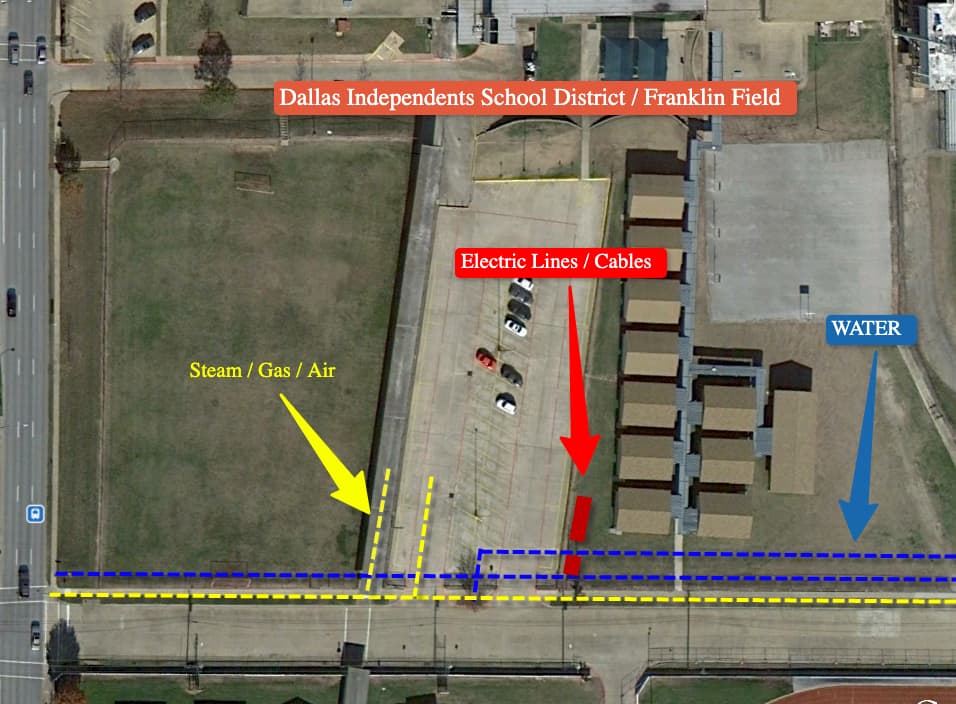Professional Gas Line Locator Services with GPR
How Do You Locate and Know Where to Dig Around Gas Lines?
Gas line detection requires a specialized approach to ensure safety and accuracy. Our team employs advanced Ground Penetrating Radar (GPR) technology, which emits electromagnetic waves into the ground and analyzes the reflections. By interpreting these reflections, we can precisely identify the location of gas lines, even if they are buried deep underground.
This non-intrusive method allows us to create detailed maps of gas line pathways and depths. Our experienced technicians use their expertise to interpret the GPR data accurately, providing you with precise information on where it’s safe to dig and where to avoid.
I am Not 100% Sure if it is a Gas Line, Can You Still Help Me?
Absolutely! We understand that identifying underground utilities can be complex, especially if you’re uncertain about whether it’s a gas line or another utility. Our comprehensive gas line detection service is designed to address such situations. Our technicians use GPR to scan the area, not just for gas lines but for various utilities, like water, sewer lines, cables, and structures as well. By assessing the GPR data, we can determine if the suspected line is indeed a gas line or something else. Our goal is to provide you with accurate information, so you can proceed confidently with your project, knowing what lies beneath the ground and how to work safely around it.
Key Benefits of Using Ground Penetrating Radar (GPR) for Gas Lines
We know, you have big plans for your land and want to get started today, but it’s important to take a minute and have your utilities located before you start digging — especially your gas lines.
To bypass this step could end up being a costly and deadly mistake. Imagine the damage and explosions that could occur if your excavation accidentally ruptures a gas line, and it becomes important to properly locate gas pipelines.
Natural gas is a common utility in North Texas, with lines feeding a majority of residential neighborhoods, homes and commercial locations.
Traditional commercial detection methods rely on magnetic devices and can’t detect plastic gas line locations, even though newer pipes are being constructed of plastic and ceramic materials.
In fact, 72 percent of all gas distribution pipes are plastic. These are the pipes that deliver natural gas from the main to the meters of homes and businesses.
That’s why Wood Inspection Services encourages the use of ground-penetrating radar (GPR) to locate gas lines, gas line mapping and gas pipe inspection. As a private utility locator based in North Dallas, Wood Inspection created comprehensive GPR reports and analysis of underground gas lines. GPR is an amazingly accurate and nondestructive way to detect anomalies underground, including plastic pipelines.
What Locating Gas Lines with GPR Means for Your Area

Preserve Your Infrastructure with Damage-Free Solutions
Because GPR is nondestructive, there’s a level of safety built into it. You will keep structures intact, avoid nicking any pipes and still be able to inspect the site.
Additionally, GPR can determine whether your gas line has been compromised. Gas leak detection is another bonus of GPR services — so you can proceed with caution to remedy the situation.
If you suspect a gas line leak outside, it’s important to get it checked out immediately. Leave the area and warn neighbors about the possible danger.
- Dying plants
- Bubbles in water puddles
- Visible air movement from the ground
- Dry spot inside moist ground
- Ground on fire
Safer Gas Line Detection
GPR is great at preventing “third party” damage. This is what happens when crews strike underground utilities. Excavators, trenchers, drills and plows can’t tell when they’re about to hit a buried pipeline, so accidents are more likely to occur without GPR mapping.
According to the Office of Pipeline Safety, these types of gas pipeline incidents killed nine people, caused 45 injuries and racked up $23 million in damages in 2019 alone.
It goes without saying that gas pipelines are the most dangerous underground utilities because of the possibility of a gas leak. Difficult to detect yet highly flammable, digging near a leak or barely disturbing the compromised gas line could lead to a major explosion.
Time-Saving Gas Line Location
Using GPR allows crews to us to accurately pinpoint a gas line and avoid it completely.
The electromagnetic pulses reflect a gas line back to the radar’s receiver, which gives a snapshot of what’s there. Going over the spot several times, a full picture develops. And this is all without knowing anything about the utility in advance.
Having an accurate report of gas line locations from an experienced GPR technician, saves time and lowers risk. Accidents happen without accurate utility location, creating significant project delays.
So before you start digging in Texas, give Wood Inspection a call. We will perform a GPR scan to map gas lines and give you a good blueprint going forward to avoid any issues.
